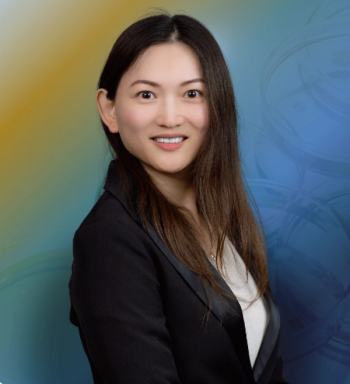
A New Mass Spectrometry Method for Protein Analysis
Proteomics and structural biology require specialized mass spectrometry methods for characterizing protein structures and conformations. Jennifer S. Brodbelt, a professor of chemistry at the University of Texas at Austin, focuses on the development and application of photodissociation mass spectrometry for studying biological molecules such as peptides, proteins, nucleic acids, oligosaccharides, and lipids. She recently spoke with Spectroscopy about her work with this technique. She is the winner of the 2017 ANACHEM Award, which will be presented at the SciX meeting in October 2017. The award is presented annually to an outstanding analytical chemist based on activities in teaching, research, administration, or other activities that have advanced the art and science of the field.
Proteomics and structural biology require specialized mass spectrometry methods for characterizing protein structures and conformations. Jennifer S. Brodbelt, a professor of chemistry at the University of Texas at Austin, focuses on the development and application of photodissociation mass spectrometry for studying biological molecules such as peptides, proteins, nucleic acids, oligosaccharides, and lipids. She recently spoke with Spectroscopy about her work with this technique. She is the winner of the 2017 ANACHEM Award, which will be presented at the SciX meeting in October 2017. The award is presented annually to an outstanding analytical chemist based on activities in teaching, research, administration, or other activities that have advanced the art and science of the field.
Your group has developed a new tandem mass spectrometry (MS/MS) method called ultraviolet photodissociation (UVPD) for cleaving proteins into diagnostic fragment ions in the mass spectrometer (1). Can you please briefly describe the basic principles of this approach?
UVPD entails irradiating ions with UV photons inside the mass spectrometer. The ions may absorb one or more photons, a process that deposits considerable internal energy into the ions and which ultimately leads to cleavage of bonds and production of fragment ions. The fragment ions create a diagnostic pattern that serves as a fingerprint of the original structure of the molecule. In short, UVPD is an MS/MS process akin to conventional collisional activation methods, but the process uses photons rather than collisions to energize the ions. Using UV photons leads to significantly higher energy deposition than collisional methods, and typically this means that the resulting spectra will have a larger array of fragment ions and thus give greater confidence in characterizing the structures of molecules. We have used this method to examine many types of molecules ranging from peptides to lipids to nucleic acids to intact proteins.
What are the advantages of the UVPD technique compared with other MS methods for probing protein structures?
One primary advantage is the higher energy deposition of UVPD compared to collisional activation methods. This results in access to a greater range of fragmentation pathways and richer MS/MS spectra. This can be beneficial when trying to characterize isomeric structures or trying to pinpoint structural modifications. We have more recently obtained evidence that the UVPD process may also be sensitive to tertiary structural features of proteins, thus allowing a means to probe protein conformations.
What are its limitations?
First, UVPD is only successful if the ion of interest absorbs UV photons. For example, 193-nm photons are efficiently absorbed by the amide backbone of proteins and peptides. Second, using high-energy UV photons (such as ones at 193 nm) creates extensive fragmentation via multiple pathways. This means that the ion current is dispersed among many fragment ions, ultimately reducing the abundances of ions. Third, using higher laser powers or photon fluxes increases the chances for multiphoton absorption and increases the probability that fragment ions themselves will absorb photons and undergo secondary fragmentation. This process may lead to disintegration of ions or unusual internal ions that are difficult or impossible to assign.
A second publication from your group describes the use of the technique for studying protein–ligand interactions in native-like ternary protein complexes, namely dihydrofolate reductase (DHFR) complexes with a cofactor and with a drug (2). What makes DHFR a good candidate for examination using the UVPD approach?
DHFR is a great candidate for the UVPD approach for several reasons. First, it is a moderately-sized protein (<20 kDa), and this is an ideal size for MS/MS characterization of intact proteins. Second, DHFR has tremendous biological importance because of its key role in the folate cycle that produces thymine, a small molecule critical for proliferation of cells. Third, DHFR is known to bind cofactor NADPH and inhibitor methotrexate, thus allowing the characterization of the resulting noncovalent complexes by UVPD-MS. These noncovalent complexes can be transferred to the gas-phase by electrospray ionization and then fully characterized by UVPD-MS.
Your group has recently extended use of the UVPD method to study multiprotein complexes and secondary protein topology (3). Did you encounter any special challenges related to analyzing these larger structures?
Increasing the size of proteins or protein complexes creates unique challenges. The intact masses of these species are larger, so this taxes the performance of many mass spectrometers. At the same time, the range of potential fragment ions (and their charge states) increases with the size of the protein or protein complex, which further complicates assignment of the resulting mass spectra.
What are the next steps in your research?
We are extending the UVPD-MS method for characterization of even larger multimeric complexes and are trying to extend the m/z range for analysis of other larger individual proteins by UVPD-MS. We also recognize the importance of mapping modifications of proteins, and that is an objective where UVPD can really shine.
References
1. J.B. Shaw, W. Li, D.D. Holden, Y. Zhang, J. Griep-Raming, R.T. Fellers, B.P. Early, P.M. Thomas, N.L. Kelleher, and J.S. Brodbelt, J. Am. Chem. Soc.135, 12646–12651 (2013).
2. M.B. Cammarata, R. Thyer, J. Rosenberg, A. Ellington, and J.S. Brodbelt, J. Am. Chem. Soc.137, 9128–9135 (2015).
3. L.J. Morrison and J.S. Brodbelt, J. Am. Chem. Soc.138, 10849–10859 (2016).
Newsletter
Get essential updates on the latest spectroscopy technologies, regulatory standards, and best practices—subscribe today to Spectroscopy.





